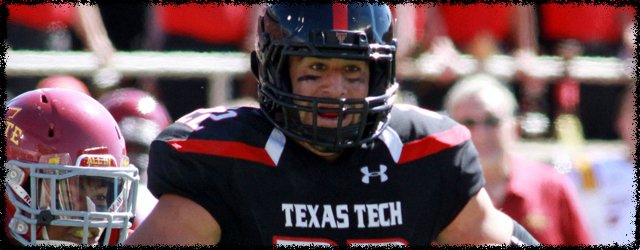Team-by-Team Draft Recap: New York Jets

This article is part of our ongoing series where we provide team-by-team analysis and veteran divisional winners and losers from the NFL Draft. You can read the entire series here.
The New York Jets struggled at the quarterback position in 2013 as rookie quarterback Geno Smith was handed the reins.
In what was an up and down season, Smith did just enough to earn another opportunity in 2014, but will face competition from veteran Michael Vick. Smith is expected to be under center come week one, but will need to vastly improve on his 2013 numbers where he passed for 3,046 yards, 12 touchdowns and 21 interceptions. To his credit, however, he did rush for 366 yards and six touchdowns. The 23 year-old can expect a revamped receiving corps as the Jets fully understood offensive weapons were sorely needed this off-season.
In free agency, the Jets struck early by landing ex-Bronco Eric Decker. Decker will badly miss the arm and leadership of Peyton Manning, but should have no problem assuming filling the WR1 role on the Jets. As to whether or not he can perform to that level of responsibility will be a key question that will be answered by the mid-point of 2014. Aiding to the backfield dynamic, ex-Titan Chris Johnson gets a change of scenery and should easily receive the bulk of the touches, although Chris Ivory still factors as a back to keep CJ fresh.
Heading into the draft, it was fully expected the Jets would address the receiver position early in addition to a starting-quality tight end. Let’s review their selections:
Jace Amaro, TE (Round 2, #49)
[am4show have=’p2;p3;p4;p5;p6;’ guest_error=’sub_message’ user_error=’sub_message’ ]
Amaro’s value slipped within the position slightly as he once was tabbed as a first round selection. Slipping into the second round, the Jets get a quality bigger-bodied and capable receiving threat. He’s not without speed (4.74, 40) and while not an accomplished in-line blocker, he possesses the body to develop in this area.
Amaro has only Jeff Cumberland ahead of him on the depth chart and should easily slide into the starting role from day one. In an offense that needs to spread the field for greater passing dynamic and efficiency, Amaro’s ability to stretch the field and provide a possession-receiver role should pay dividends immediately for fantasy coaches. Amaro is a late second round selection and has been slipping into the third round, making for a very good value play.
Jalen Saunders, WR (Round 4, #104)
The little known Saunders is getting virtually no attention in the fantasy world. The diminutive (5’9″/165 lbs.) receiver works naturally in the slot and can add a speed threat in the return game as well. He’s able to achieve a good level of separation and should see ample opportunities running shallow crossing routes that put a defender in a trailing position.
He’s a slight bodied player who will only have value in the slot and in formats that award return yardage. Additionally, Saunders does have a history with marijuana.
Shaq Evans, WR (Round 4, #115)
Evans, another lesser-known and low profile receiver, was the third receiver selected by the Jets in the draft. He’s relatively limited in his route tree, relying more on straight-line and shallow-breaking routes. At just over 6’1″ and 213 lbs., Evans has the size to be a difference maker if he makes strides in not only his route tree, but in the areas of separation, stemming his routes and breaks. He’s not overly agile or quick and seems a bit stiff over his hips with slower feet.
Evans hasn’t factored much in current rookie drafts.
Quincy Enunwa, WR (Round 6, #209)
Enunwa has prototypical big receiver qualities, standing 6’2″ and weighing in at 225 lbs. His timed 4.45 speed should show faster than it has on tape and he suffers from consistency issues when extending his hands to snatch the ball. He’s not overly adept in his route running and needs a lot of work in all areas. When we talk of “raw” receivers, Enunwa could be the poster child. But with his size and speed combination, the Jets are banking on their ability to develop the young receiver, who could see an opportunity for snaps early in his career due to the lack of impact currently at the position.
Tajh Boyd, QB (Round 6, #213)
Boyd, once considered to be a higher round selection, fell to the Jets in the sixth round. Lacking ideal height at just less than 6′, Boyd doesn’t display the same field vision as other smaller quarterbacks. He also played in a system resembling nothing like a pro-style offense and will have a steep learning curve. Boyd’s primary value will come from his mobility and his ability to throw accurately on the run. In a system where the pocket is moved, Boyd does show a level of fluidity that, if other parts of his game can be developed, makes for an intriguing package.
Summary
I would have liked to have seen the Jets select a receiver in the first round, followed by a tight end like Amaro in the second. As it stands, they did land Amaro. The acquisition of Decker was obviously considered enough to hold over the position for another year while lesser names could be developed. Disappointing receiver Stephen Hill still exists on the roster and may be fighting for a roster spot. As a Demaryius Thomas clone (at least in physical traits), it’s hard to give up on Hill and he should end up with one more year to hopefully develop. The combination of the new receivers and Amaro may be enough to help Geno Smith take positive steps in his own development. Amaro as a late second or early third round rookie selection could be a high-value pick and he’ll be in the mix for top production from rookie tight ends. All eyes will be on Eric Decker as he tries to show that he can be a legitimate WR1, a tall order without the elder Manning under center.
Follow me on Twitter: @DLF_Jeff
[/am4show]
- Lineup Advice: Wrap-up, Thank You and Goodbye (TTFN) - January 1, 2024
- Lineup Advice: Week 17 – Championship Edition - December 26, 2023
- Lineup Advice: Week 16 – The “What is” Edition - December 19, 2023


































































